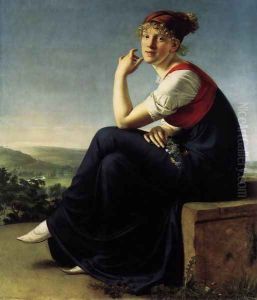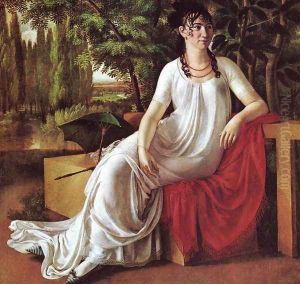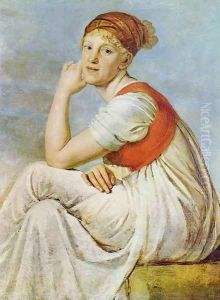Christian Gottlieb Schick Paintings
Christian Gottlieb Schick was a German Neoclassical painter born on August 15, 1776, in Stuttgart, Duchy of Württemberg. He showed an early interest in art and was initially trained by his father, who was a sculptor. Seeking to further his education in the arts, Schick went on to study at the Stuttgart Art Academy. His talent was recognized early on, and he was supported by the Duke of Württemberg, who provided him a scholarship to continue his studies.
In 1795, Schick moved to Paris, where he became a student of the famous French painter Jacques-Louis David, the leading artist of the Neoclassical movement. Under David's guidance, Schick honed his skills and absorbed the classical ideals of clarity, harmony, and balance. This exposure to Neoclassical art principles profoundly influenced his artistic direction. Three years later, he moved to Rome, which was a central hub for artists wishing to study classical antiquity and the Renaissance masters. In Rome, Schick became a member of the Lukasbund, a society of German artists. He also became closely associated with other German artists in Rome, such as Johann Gottfried Schadow and Friedrich Overbeck.
Schick's work was characterized by its fine detail, use of clear lines, and classical grace. His portraits and historical paintings were particularly notable for their sophisticated elegance and adherence to Neoclassical aesthetics. One of Schick's most famous works is 'Heinrike Dannecker', a portrait of the wife of sculptor Johann Heinrich Dannecker, which exemplifies the Neoclassical ideal in its serene composition and lifelike representation.
Tragically, Christian Gottlieb Schick's life was cut short by tuberculosis, and he died on May 7, 1812, in Rome at the age of 35. Despite his early death, Schick had made significant contributions to the Neoclassical movement, and his works are still appreciated for their beauty and adherence to classical ideals. He left behind a legacy that continues to be studied and admired by art historians and enthusiasts alike.


